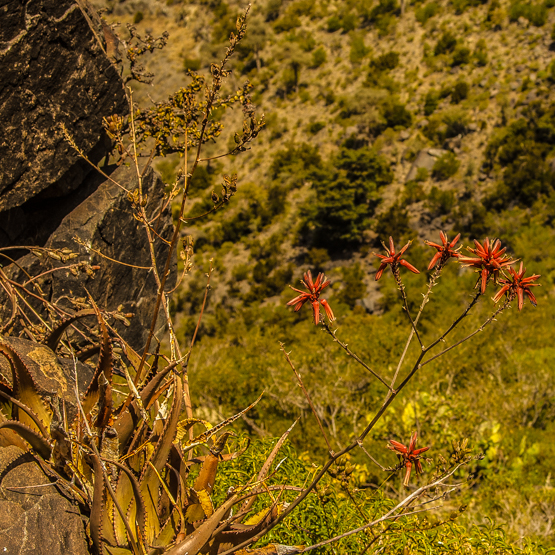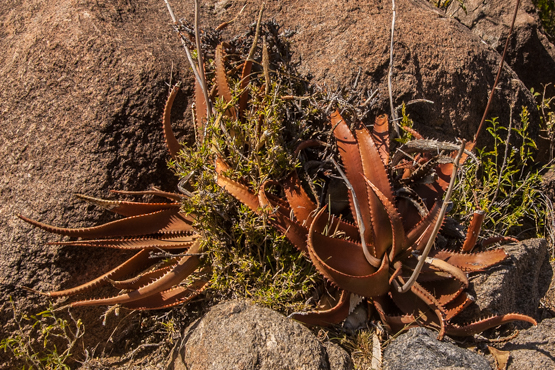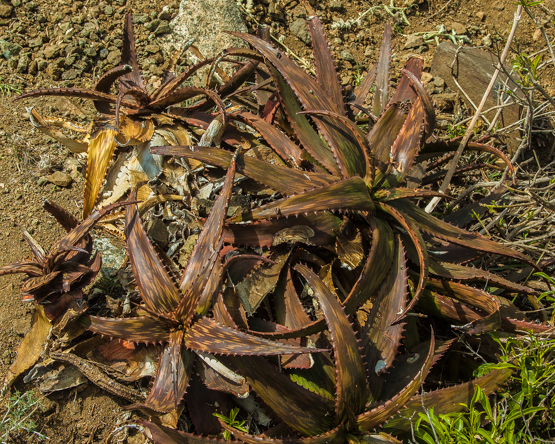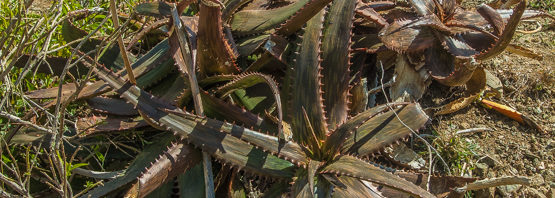Aloe somaliensis was described in 1899, from plants that were raised at Kew from seeds that had been collected a few years before, probably at Sheikh pass in Somaliland Protectorate (as it was then called). It is now known to occur not only in Somaliland but also in Djibouti, on rocky slopes at altitudes between 700 and 1700 m.
It may be of interest to know that the accompanying pictures were taken late January 2015, likely at roughly the same spot the original seeds came from.
The plants grow singly or in small groups and bear 12-16 leaves, usually narrowly lance-shaped and about 20 cm long.
The inflorescences are 60-80 cm tall.





It’s always great to see a habitat plant, especially one that is so often misidentified in cultivation (at least it was in San Diego, where any Aloe collector had it in their collection, often called something else).
Thanks for your comment and good to hear that my posts are, at least sometimes, useful in this respect too.
Welbedankt Frans, het is een echt plezier om je interessante postings te ontvangen, ik kijk al uit naar de volgende.
Hallo Trudi, fijn om te horen dat je er plezier aan beleeft!